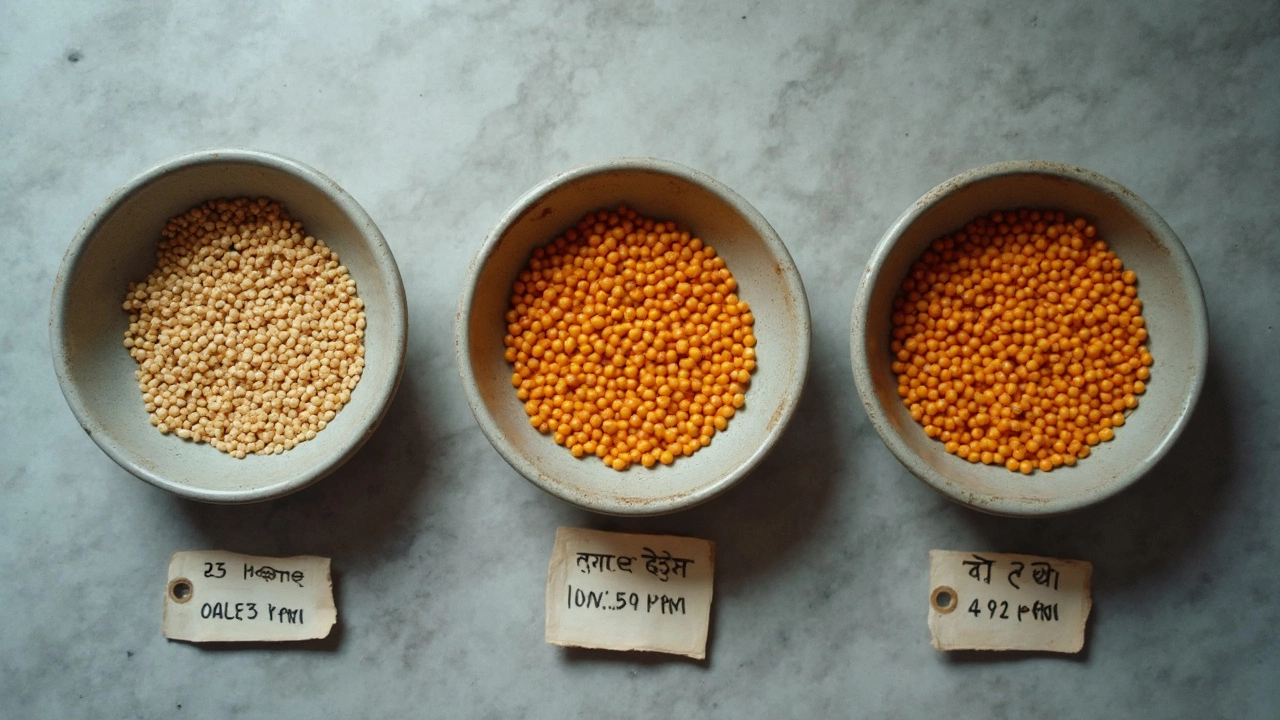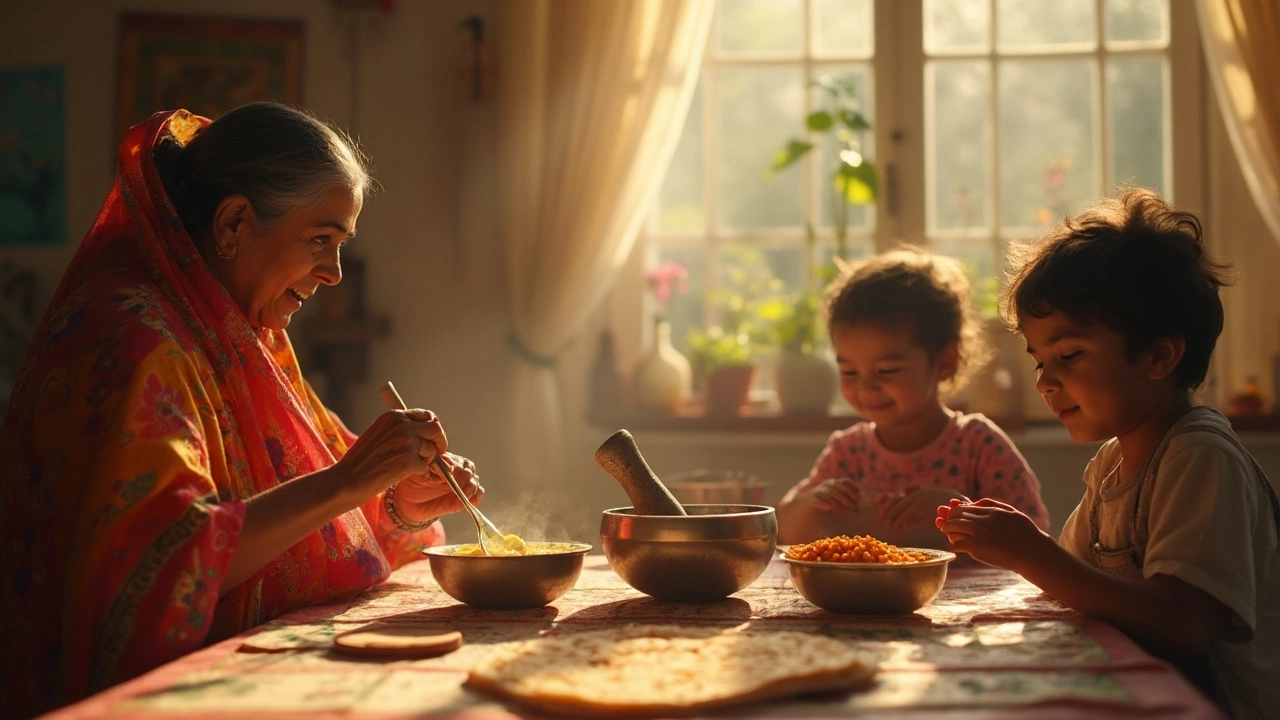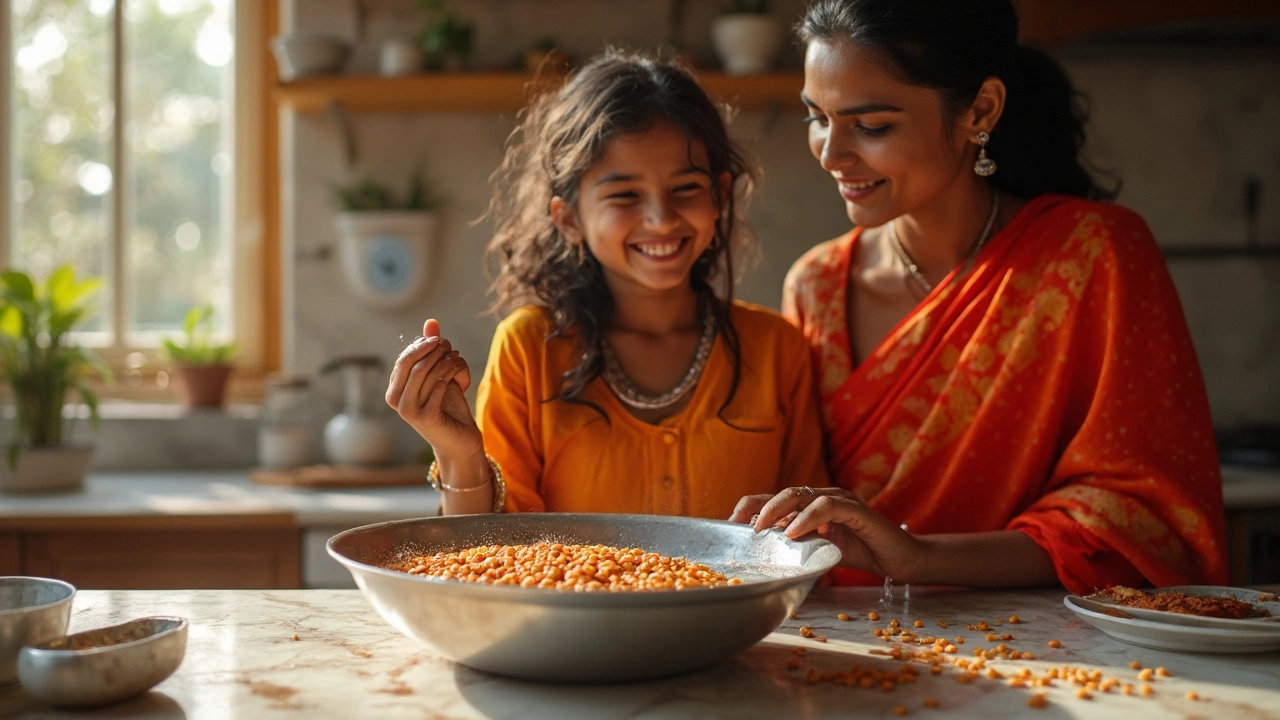If your dosa batter comes out flat or gritty, the culprit could be right at the start—how long you soaked your urad dal. There's no skipping this. Urad dal turns soft, blends smooth, and ferments nicely only when it's soaked just right. So, how long should you actually leave it soaking?
The sweet spot is 4 to 6 hours. Less than that, the dal will stay a little hard and stubborn, making your batter rough. Overdo it—like soaking overnight or for 10-12 hours—and your batter can go a bit sour, even mushy. The result? Your dosas won't crisp up or taste as fresh.
- Why Soak Urad Dal at All?
- How Long to Soak: The Golden Number
- What Changes if You Soak Too Short or Too Long?
- Quick Soaking Hacks for Busy Cooks
- Extra Tips for Fluffy Dosa Batter
Why Soak Urad Dal at All?
If you skip soaking urad dal, you’re basically setting yourself up for a headache. Raw urad dal is hard—almost like tiny pebbles. Grinding it dry? Forget about it. Your mixer will make loud noises, overheat, and turn out chunky bits instead of the smooth paste you need for a fluffy dosa batter.
Soaking makes a big difference. When you soak urad dal, it absorbs water, softens up, and swells. This breaks down tough stuff like phytic acid in the dal’s skin—making the nutrients easier to digest and helping the batter ferment better. Soaking also helps the dal whip up light when ground and mixed, which gives your dosas those essential, tiny holes and that nice, crisp bite.
Take a look at how soaking changes things for dosa prep:
- Softer texture: Soaked dal grinds smoother so you get a fine, lump-free batter.
- Better fermentation: Water-soaked dal encourages good bacteria, so the batter rises well and gets that classic dosa tang.
- Less time and effort: Grinding soaked dal is way easier on your blender and your arms.
- Crispier dosa results: An even, aerated batter leads to the golden, lacy dosas we crave.
You can see the difference in about four hours. Here’s a simple comparison:
| Status | Texture | Grinding Time | Batter Quality |
|---|---|---|---|
| Unsoaked dal | Hard, gritty | Very long | Coarse, dense |
| Soaked 4-6 hrs | Soft, plump | Quick and easy | Smooth, fluffy |
So, soaking isn’t just a tradition. It’s the one step you shouldn’t skip if you want to nail perfect dosas every time.
How Long to Soak: The Golden Number
When it comes to soaking urad dal for a classic dosa batter, you don’t need to guess. Most tried-and-tested dosa recipes land on a range of 4 to 6 hours. This window is ideal—long enough to let the dal soak up water, turn soft, and grind down easily, but not so long that it starts to ferment on its own and messes up the taste.
Temperature can play a sneaky role. If your kitchen is cool (under 20°C), you might want to let the dal sit for 6 hours. If it’s hot—as in Indian summers—aim closer to 4 hours, and keep the soaking bowl covered to keep out dust.
If you want numbers, here’s a simple breakdown:
| Room Temperature | Soaking Time |
|---|---|
| Above 25°C | 4 hours |
| 20°C - 25°C | 5 hours |
| Below 20°C | 6 hours |
Don’t forget the water. The dal should be fully covered, with a couple of extra inches above since it’ll swell up as it soaks. Use clean, cool water. Tap water is fine, but if yours is very hard water (lots of minerals), filtered water gives smoother results.
So to sum up: 4 to 6 hours is your golden number for soaking urad dal for the best dosa batter. This works whether you’re a first-timer or making dosa batter every week. Stick to the window and you’ll avoid most common mistakes.

What Changes if You Soak Too Short or Too Long?
The magic of perfect dosa batter starts with the soaking. Go too short or too long, and things can fall apart pretty fast. Let’s get into what really happens with your urad dal soaking time.
If you under-soak the dal, you’ll notice it feels gritty or lumpy even after grinding. It just doesn’t blend well. Batter made from under-soaked dal leads to dosas that are thick, not crisp, and sometimes have small, hard bits in them. That’s because the proteins and starches in urad dal haven’t had enough moisture to soften up.
Now, say you let the dal soak much longer than the ideal 4-6 hours—maybe overnight, or 10-12 hours. Here, you’ll see the dal start breaking down too much. The batter turns a bit slimy and ferments way faster, especially in summer. You might also notice a slight sour smell, and your dosas won’t crisp up like you want. Instead, they turn floppy and sometimes stick to the pan.
- Short soak (under 4 hours): Hard to grind, chunky batter, flat or hard dosas.
- Ideal soak (4-6 hours): Soft dal, easy blending, smooth batter, crisp dosas.
- Long soak (over 8 hours): Over-fermented batter, sour taste, mushy or sticky dosas.
If you’re in a hurry and try a quick soak, just know that shorter soaking will need extra grinding time and a super powerful blender to even come close to that ideal texture.
| Soaking Time | Texture After Grinding | Dosa Texture |
|---|---|---|
| 2 hours | Coarse, grainy | Thick, not crisp |
| 4-6 hours | Smooth, fluffy | Thin, crispy |
| 10+ hours | Slimy, watery | Sour, floppy |
So trust those hours. They really make a difference in your dosa batter—it’s not just about following a recipe blindly but understanding this simple science.
Quick Soaking Hacks for Busy Cooks
Life gets busy, and sometimes that perfect urad dal soaking time feels impossible. Don't panic—there are ways to rush the soak without losing too much quality in your dosa batter.
- Hot Water Soak: Swap your regular room temp water with hot (not boiling) water. Just pour it over your urad dal and soak for about 1.5 to 2 hours. The heat speeds things up, softening the dal much faster than cold water does.
- Baking Soda Trick: Add a tiny pinch (around 1/8 teaspoon for a cup of dal) of baking soda into the soak water. This helps soften the dal even quicker, bringing your soaking time down to 1 to 2 hours. Make sure to rinse the dal really well before grinding, or you might taste the soda later.
- Microwave Assist: Pop the soaked urad dal with its water in the microwave for about a minute after 30-40 minutes of soaking. Let it cool, then continue soaking. You’ll shave another hour off the regular time.
- Pressure Cooker Last Resort: If you’re totally out of time, throw the rinsed dal with a cup of water into a pressure cooker and give it 1 whistle. The dal softens super-fast this way, but only use this hack in emergencies—pressure-cooked dal can sometimes alter the dosa texture.
Different quick-soak methods can speed things up, but they may tweak the texture just a bit. If you want dosa that’s extra crispy and fluffy, the slow soak is still king. But for weeknight scrambling or forgotten prep, these tricks can be lifesavers.
| Method | Soaking Time |
|---|---|
| Traditional (Room Temp) | 4-6 hours |
| Hot Water | 1.5-2 hours |
| Baking Soda | 1-2 hours |
| Microwave | ~2 hours |
| Pressure Cooker | ~30 mins (not true soaking) |
Remember, always wash urad dal really well before and after soaking, whichever hack you try. This washes off excess starch and any off flavors so your dosa batter still turns out great.

Extra Tips for Fluffy Dosa Batter
If you’re chasing that light, restaurant-style crispiness, these simple tweaks make a big difference. The right soaking is a start, but a few smart habits turn good batter into wow batter.
- Always use ice-cold water when grinding urad dal for your batter. It keeps the batter from heating up, which helps the dal blend smoother and gives the batter a fluffier texture. If you have a wet grinder, even better—it gives you the silkiest, airiest mix.
- Grind the dal and rice separately. Mix them together only at the end. Dosa batter gets bubblier this way, since urad dal needs more time and water to puff up right.
- Don’t skip the salt. Add it before fermenting if you live somewhere hot. If your kitchen’s chilly, wait and add salt after fermenting—the right timing keeps the batter from turning too sour too quickly.
- Fermentation is key. Warm spots help. Pop the bowl in your oven with only the light on or set it near a warm window. You want little bubbles and a mild sour smell—not a weird tang.
- Keep your batter consistency right—the classic test? When you lift your mixing spoon, the batter should fall back in a thick, smooth ribbon, not in big blobs or watery streams.
If you’re wondering how much water to add, check out this handy reference for the two usual batches:
| Ingredient | Water for Soaking | Water for Grinding |
|---|---|---|
| Urad dal (1 cup) | 3 cups | 0.75 – 1 cup |
| Rice (2 cups) | 4 cups | 0.75 – 1 cup |
Stick to these basics, and your dosa batter will set you up for ultra-crispy, fluffy dosas every time. If your first batch feels off, it’s not you—just tweak one variable next time, and you’ll lock in that perfect texture soon.
